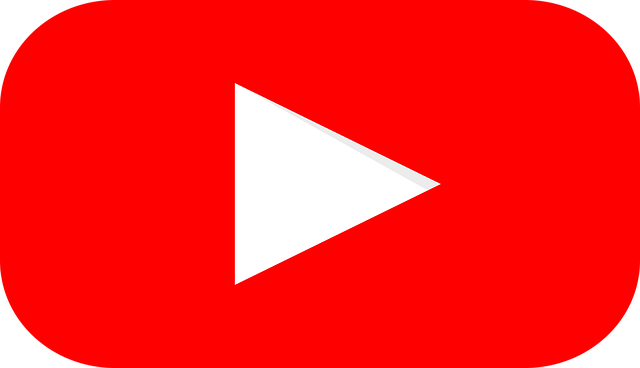Why an Editorial Calendar is the Equivalent of a Xanax
You wake up in the morning, it’s there. You go to sleep at night, it’s there. You know you have to keep writing content for your blog, and there’s literally no end in sight. Ever. Feeling a little anxious? That’s OK, because I’ve got a magic little pill that will help take all your worries away. It’s an editorial calendar, and it promises to release a ton of pressure from your daily content-creation process. Let’s get right into it, shall we?
- Choosing topics for your blog
- Refining your topics
- Creating the editorial calendar
- FAQ: How can I use an editorial calendar to reduce content creation stress?

Choosing Topics for Your Blog
Whatever industry you’re in, there’s bound to be discussion surrounding it. This is a good place to start if you’re feeling overwhelmed.
External Inspiration
1. Industry news and events. Do a quick survey of the topics at upcoming conferences or industry events, start listening to the pulse of your industry. Use content aggregation and other services like Google Alerts to monitor the news on the industry.
Once you determine what is important now, think about how your blog can contribute to the conversation with a unique perspective. Be mindful that if you’re in a fast-paced industry, news can get old fast. So try not to plan too far ahead with “soup du jour” topics.
2. Guest authors. You always hear people talking about guest authors as part of your blog strategy, and there’s a reason for that: Because it’s awesome. Hosting outside voices and expertise adds richness to your blog. And guess what else? It frees up your time! (Well, that’s not completely true; remember there is definitely some project management involved.) Consider both industry folks and others from within your company as potential guest authors.
3. Analytics. I put this into the “external” section because here, your audience is telling you what they like. When you check out your Web analytics, you can discover what the most popular blog posts are. Google Analytics’ content reports and social reports are a great place to start. Take analytics metrics and other metrics like comments per post to find out which have the most activity that is important to you.
Internal Inspiration
1. Company news and events. Now that you have external inspiration, you’ll want to balance this with internal priorities and happenings. Consider what sorts of services, events and newsworthy things are on the horizon at your company. For example, are you or any of your colleagues going to be speaking on a topic soon? How can you integrate that into an upcoming post or two?
2. Business objectives. Perhaps you have a new product or service you’re launching. You’d never want to use your blog as a hard-sell platform, but there are ways to start positioning your brand for the release. What are some of the common problems this new service/product addresses, and how can you begin talking about these types of things ahead of time?
3. Your blog. Maybe you already have well-defined categories on your blog. This is another great place to find inspiration. Take a look at all your categories and see if some of them couldn’t use some beefing up. Or maybe there’s old topics in need of “evergreening”? You could also find there are enough gems collectively on one particular topic to create a more in-depth piece of content on the topic.
Refining Your Topics
Want to be really anal? Start breaking down your topics into outlines. See, having a general idea for a topic is a great start, but if you really want to start alleviating the stress that comes with writing a post, start thinking about what the post will look like and who you are talking to.
Some blogs have several types of information-seekers. Uncovering your blog’s audience and what a type of information speaks to them is a whole different post; but, keeping that idea in mind, think about the angle of your post.
Will it be a “how-to” post focused on a 101-level education or an expert-level look into a matter? Perhaps it’s an opinion piece, an interview or even a compare-and-contrast approach. Is it from a bird’s eye view or will the post look at one component of a matter?
Once you’ve refined the angle, think about planning for content elements. Consider the following elements you might include in a post:
- Additional quotes from people within or external to your company.
- Authoritative resources to link to.
- Video content on the topic (original or other).
- Graphics (original or other).
Planning these sort of outlines gives you time to bookmark research, delegate tasks (like if you need to rope in a designer or an interviewee), and jot down ideas ahead of time that will give the topic depth.
More planning = less anxiety … are you sensing a theme here?
Creating the Editorial Calendar
How to Manage the Calendar
You might be asking, how far in advance should I plan? Well, depending on your business and industry (opportunities, objectives, the pace of the industry, etc.), it may be easier to plan in shorter, 90-day spurts or way further ahead of time. You decide, based on what’s right for your business, industry and most importantly, your sanity.
Sometimes, a month ahead of time is all you need. Take the last week of a month to start brainstorming for the next month. That way, by the first day of the month, you are ready to hit the ground running – and without all the added pressure that comes with being forced to think of a new topic on the spot, every day.
How many days a week you blog depends on your resources. Again, filling in the blanks with guest authors is a great way to keep your blog going even if you and your team don’t have the resources to blog daily or even every other day.
You can certainly run tests on how often to blog by watching your analytics, and seeing how posts are being responded to. If in-depth bi-weekly posts are more shared than shorter daily posts, you might take that into consideration. Also watch your traffic patterns, your comments and any other metrics that are important to you.
For more on tracking the progress of your content through analytics, check out this post on Google Analytics social reports.
How to Fill the Calendar
Now that you have a good handful of topics, you can start filling in the days of the calendar. Digital calendars are easily shareable with key people across your company, but I like to start with a good old-fashioned oversized paper calendar.
This offers plenty of room to brainstorm, cross things off with a red pen, use Wite-Out, and spill my coffee on, giving it more of a “Mad Men” feel.
Here’s some tips on filling in the calendar:
- Start penciling in your topics, and be sure to coincide the days these topics are featured with any important internal timelines or upcoming events.
- Designate “news” days within the schedule, and instead of planning the topic way ahead of time, wait to see what sort of conversations are happening leading up to that day.

Make like The Fonz and say “Ayyyyy” with your new content strategy. - Sometimes things come up, so be flexible in your approach. If you have a newsworthy item or you’re sparked by creativity, go for it! Use the calendar as a guiding light, not a prison for your creativity.
- For each post, put together mini-marketing strategies. What time of day will you post it and where will you promote the content? Make the strategy appropriate for the channel. For example, if it has a great graphic, think about Pinterest. A good video? YouTube. An interesting conversation starter? LinkedIn groups. Truth is, one post is usually appropriate for many channels. Annotate ideas in your calendar as you finish filling it in.
At the end of this process, you might be surprised to find that a well-planned editorial calendar for your blog can lend itself to your overall content strategy pretty easily. Blog posts can become white papers, eBooks, direct mail topics, marketing collateral and much, much more.
But for now, take one step at a time. If an editorial calendar doesn’t help relieve some of your daily work stress, then perhaps it’s time for that Xanax.
Take your editorial calendar to the next level with SEO. Talk to us.
FAQ: How Can I Use an Editorial Calendar to Reduce Content Creation Stress?
Managing your editorial calendar effectively can make all the difference between a streamlined, stress-free process and a chaotic, anxiety-inducing scramble. As an expert in the field, I’m here to share some valuable insights and tips on how to use an editorial calendar to reduce content creation stress.
- Start with a Clear Strategy
The foundation of a successful editorial calendar is a well-defined content strategy. Before you start planning specific content, outline your goals, target audience, and key messages. Knowing what you want to achieve will help you make informed decisions about the content you create and how to organize it in your calendar.
- Choose the Right Tools
Selecting the right tools for managing your editorial calendar is crucial. There are many platforms and software solutions available, such as Trello, Asana, or even a simple Google Calendar. These tools allow you to create, schedule, and collaborate on content, making your workflow more efficient.
- Create a Content Calendar Framework
Your calendar should have a clear structure. Start by defining categories or content themes and allocate specific timeframes for each. For example, you might designate Mondays for blog posts, Wednesdays for social media updates, and Fridays for email newsletters. This framework provides consistency and helps you stay organized.
- Balance Consistency and Flexibility
While it’s essential to maintain a consistent posting schedule, allow room for flexibility. Unexpected events or trending topics may require adjustments to your plan. Be ready to adapt while ensuring your primary content strategy remains intact.
- Plan Ahead
To reduce stress, plan your content well in advance. Create a content pipeline, outlining topics and ideas for the upcoming weeks or months. This foresight gives you time to research, create, and edit content at a comfortable pace, rather than rushing to meet deadlines.
- Delegate Tasks
If you’re working in a team, clearly define roles and responsibilities. Assign tasks to team members based on their strengths and expertise. Effective delegation can help distribute the workload and ensure that content creation doesn’t fall solely on your shoulders.
- Review and Optimize
Regularly review your editorial calendar and content performance. Be willing to adapt your content strategy according to what you learn; optimizing it should be seen as an ongoing endeavor.
- Communicate and Collaborate
Maintain open communication within your team, and encourage collaboration. Regular meetings and discussions can lead to fresh ideas and better coordination, reducing the chances of last-minute content creation stress.
- Be Realistic
Set achievable goals and avoid overloading your calendar. It’s better to produce high-quality content consistently than to push for quantity at the expense of quality.
Using an editorial calendar to reduce content creation stress is not just a matter of scheduling; it’s about strategic planning, efficient tools, and effective teamwork. By following these tips and creating a content calendar that suits your needs, you can enjoy a smoother and less stressful content creation process.
Step-By-Step Process: Using an Editorial Calendar to Reduce Content Creation Stress
Step 1: Define Your Content Strategy
Begin by outlining your content goals, target audience, and key messages. Your content strategy should serve as the foundation for your editorial calendar.
Step 2: Select the Right Tools
Choose suitable software or platforms for managing your calendar. Options include Trello, Asana, or Google Calendar. These tools will help you organize and streamline your content creation process.
Step 3: Create a Content Calendar Framework
Design a clear structure for your editorial calendar, incorporating categories and designated timeframes for various types of content.
Step 4: Balance Consistency and Flexibility
Maintain a consistent posting schedule but remain flexible to adapt to unexpected events or trending topics.
Step 5: Plan Ahead
Develop a content pipeline by outlining topics and ideas for the coming weeks or months. This proactive approach allows you to work at a comfortable pace.
Step 6: Delegate Tasks
If you have a team, delegate tasks based on individual strengths and expertise. Effective delegation eases the content creation workload.
Step 7: Review and Optimize
Regularly assess your editorial calendar and content performance, making necessary adjustments to your strategy.
Step 8: Communicate and Collaborate
Foster open communication within your team and encourage collaboration to generate fresh ideas and improve coordination.
Step 9: Be Realistic
Set achievable content goals, avoiding overloading your calendar and prioritizing quality over quantity.
Incorporate these strategies into your content creation process, and you’ll find yourself experiencing a much more streamlined and stress-free workflow.
This article was updated on November 16, 2023.

6 Replies to “Why an Editorial Calendar is the Equivalent of a Xanax”
@Jessica, agree with you. I do it everyday (the list I posted) is not just about numbers, it is about relationship.
Each time when I read and comment blog posts, I look for building relationship with the blog owner. But in order to get quality, we need quantity. E.g, if the percentage of building relationship thru’ blog comment is 3 out of 10, and my goal is 10 in one month, then I need to get 30 blog posts to comment.
If we don’t have numbers, we don’t have quality relationship. Imagine if we have only one person in our business network, it won’t help for our business, but if we have 100 people in our networks, then we can ask for help from the 100 people. :)
I agree with your comment! :)
I do see your point about the percentages; recurring visibility is important to building a brand. This is kind of a tangent, but I think at some point, there’s a shift that comes from trust of the community. This is where the brand becomes something people are vying to interact with. Consequently, that’s where the great brands continue to shine by never losing that personal touch, and interacting with everyone they can.
@Kent: Thank you for your comment, Kent. Process is great. It helps us stay on track. There’s something about that strategy that feels very close to automation though — maybe it’s the number attached to it. Personally, my hope would be that someone is commenting on a post (or any other social action) because they are inspired by it, not to meet a quota. On the other hand, if you don’t have goals, things won’t get done. With social though, stringent quotas almost feel like the point of social is being missed altogether. It’s like going to a party with a goal to meet five people, get two people’s numbers and make one professional connection all before the night is over. Thoughts?
@Andy: I agree that you have to have some chaotic, inspirational moments. But when you’re in the business of content, you have to have a scheduling process to keep things moving and to stay sane. Thanks for reading, Andy. :)
I dunno, I’ve still never managed to stick to an editorial calendar. I need that chaos to think of good posts!
Hi Jessica, the most important is habit. We need to develop a habit for our content. My habit is
1) I comment 10 blogs per day (when you read other people blogs, you won’t run out of topics)
2) Answer 10 tweets per day (This is for building relationship)
3) Do 3 links per day (this is for seo link building)
4) Add 3 people on Linkedin per day (this is for b2b business relationship)
5) Talk to local media at least once a week (this is for local media to notice you and get interview to build your reputation
6) Facebook? Sorry, not for my business.
If we can do this consistently, we not only can blog, but we actually building our reputation.
LEAVE A REPLY









